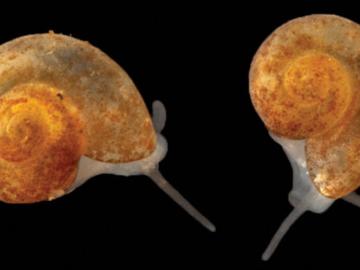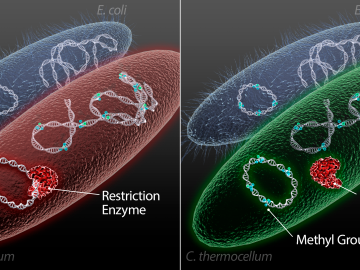
Filter News
Area of Research
- (-) Energy Science (65)
- Advanced Manufacturing (6)
- Biological Systems (2)
- Biology and Environment (67)
- Building Technologies (2)
- Computational Biology (1)
- Computational Engineering (1)
- Computer Science (2)
- Energy Sciences (1)
- Fusion and Fission (9)
- Fusion Energy (7)
- Materials (30)
- Materials for Computing (3)
- Mathematics (1)
- National Security (5)
- Neutron Science (10)
- Nuclear Science and Technology (9)
- Nuclear Systems Modeling, Simulation and Validation (1)
- Quantum information Science (2)
- Supercomputing (50)
News Type
News Topics
- (-) Advanced Reactors (2)
- (-) Bioenergy (12)
- (-) Clean Water (7)
- (-) Composites (11)
- (-) Summit (2)
- 3-D Printing/Advanced Manufacturing (48)
- Artificial Intelligence (3)
- Big Data (2)
- Biology (6)
- Biomedical (3)
- Biotechnology (2)
- Buildings (27)
- Chemical Sciences (4)
- Computer Science (16)
- Coronavirus (8)
- Critical Materials (5)
- Cybersecurity (5)
- Energy Storage (44)
- Environment (35)
- Fossil Energy (1)
- Grid (29)
- High-Performance Computing (3)
- Hydropower (3)
- Machine Learning (2)
- Materials (17)
- Materials Science (14)
- Mathematics (2)
- Mercury (2)
- Microelectronics (1)
- Microscopy (4)
- Nanotechnology (3)
- National Security (1)
- Neutron Science (3)
- Nuclear Energy (3)
- Partnerships (4)
- Polymers (6)
- Quantum Science (1)
- Security (3)
- Simulation (2)
- Space Exploration (3)
- Statistics (1)
- Transportation (47)
Media Contacts

Sometimes conducting big science means discovering a species not much larger than a grain of sand.

Scientists at the Department of Energy’s Oak Ridge National Laboratory have developed a new method to peer deep into the nanostructure of biomaterials without damaging the sample. This novel technique can confirm structural features in starch, a carbohydrate important in biofuel production.

Researchers at ORNL demonstrated that sodium-ion batteries can serve as a low-cost, high performance substitute for rechargeable lithium-ion batteries commonly used in robotics, power tools, and grid-scale energy storage.

Oak Ridge National Laboratory researchers created a geothermal energy storage system that could reduce peak electricity demand up to 37% in homes while helping balance grid operations.

To better determine the potential energy cost savings among connected homes, researchers at Oak Ridge National Laboratory developed a computer simulation to more accurately compare energy use on similar weather days.

While Tsouris’ water research is diverse in scope, its fundamentals are based on basic science principles that remain largely unchanged, particularly in a mature field like chemical engineering.

Scientists at the US Department of Energy’s Oak Ridge National Laboratory have demonstrated a method to insert genes into a variety of microorganisms that previously would not accept foreign DNA, with the goal of creating custom microbes to break down plants for bioenergy.

A modern, healthy transportation system is vital to the nation’s economic security and the American standard of living. The U.S. Department of Energy’s Oak Ridge National Laboratory (ORNL) is engaged in a broad portfolio of scientific research for improved mobility

A team including Oak Ridge National Laboratory and University of Tennessee researchers demonstrated a novel 3D printing approach called Z-pinning that can increase the material’s strength and toughness by more than three and a half times compared to conventional additive manufacturing processes.

A new method developed at Oak Ridge National Laboratory improves the energy efficiency of a desalination process known as solar-thermal evaporation.


